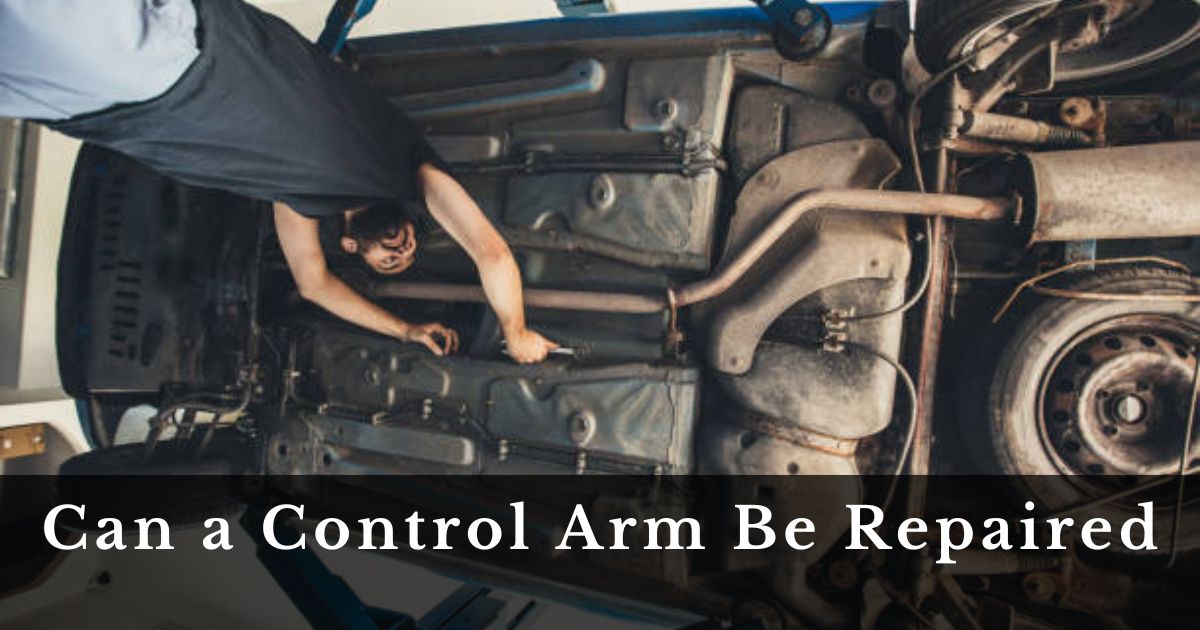Can a control arm be repaired, If your car’s suspension isn’t working right, you might be asking if the control arm can be fixed. The control arm helps keep your car stable and control when you’re driving, so it’s important to fix any problems quickly. In this article, we’ll talk about whether you can repair a control arm and look at other options too.
Introduction to Control Arms
Before we dive into the repair aspect, let’s understand what control arms are and their significance in a vehicle’s suspension system.
Understanding the Function of Control Arms
Control arms, also known as A-arms, are crucial components of a vehicle’s suspension system. They play a vital role in maintaining stability and ensuring smooth handling, especially during cornering and uneven road conditions.
What are control arms?
Control arms are metal components that connect the wheel hub to the vehicle’s chassis. They are typically shaped like a letter ‘A,’ hence the name A-arms. Control arms pivot at both ends, allowing the wheels to move up and down while keeping them aligned with the body of the vehicle.
Importance of control arms in vehicle suspension
Control arms work in conjunction with other suspension components to absorb shocks and vibrations from the road surface. They provide support and flexibility, allowing the wheels to maintain proper contact with the road for optimal traction and control.
Signs of Control Arm Damage
Now that we understand the role of control arms let’s explore how to identify potential issues with them.
Common symptoms of a faulty control arm
Uneven tire wear: Damaged control arms can cause irregular tire wear patterns, such as excessive wear on the inner or outer edges.
Loose or rattling noise: Worn-out control arm bushings or ball joints can result in a clunking or rattling noise, especially when driving over bumps or rough roads.
Steering instability: Faulty control arms can affect steering responsiveness and lead to a feeling of looseness or instability while driving.
Vehicle vibration: Vibrations felt through the steering wheel or floorboard may indicate issues with the control arm or other suspension components.
Impact of damaged control arms on vehicle performance
Ignoring signs of control arm damage can have serious consequences for vehicle performance and safety. A compromised suspension system can affect steering precision, handling, and overall ride comfort, increasing the risk of accidents or mechanical failures.
Can Control Arms Be Repaired?
Now comes the crucial question: Can control arms be repaired, or is replacement the only option?
Exploring repair options for control arms
In some cases, control arms can be repaired rather than replaced entirely. Repair options may include:
Welding: Minor cracks or fractures in the control arm may be repairable through welding techniques. However, this method requires precision and expertise to ensure structural integrity and safety.
Replacement of bushings and ball joints: If the control arm bushings or ball joints are the primary source of the issue, they can often be replaced separately without replacing the entire control arm assembly.
Factors to consider before repairing control arms
Before deciding on repair or replacement, several factors should be taken into account:
Extent of damage: The severity and location of damage will influence the feasibility of repair.
Vehicle age and mileage: Older vehicles with high mileage may benefit more from control arm replacement for long-term durability.
Cost of repairs: Compare the cost of repairing versus replacing control arms, considering labor and parts expenses.
Replacement vs. Repair
Let’s weigh the pros and cons of repairing control arms versus opting for replacement.
Pros and cons of repairing control arms
Pros of repair:
Cost-effective: Repairing control arms can be more budget-friendly than replacing them entirely.
Preserves original components: Repairing minor damage allows you to retain the original control arm assembly, maintaining vehicle authenticity.
Cons of repair:
Limited durability: Repaired control arms may not offer the same level of durability and longevity as new ones.
Risk of failure: Improperly repaired control arms may fail prematurely, leading to safety hazards and additional repair costs.
When to opt for control arm replacement
Severe damage: If the control arm is severely bent, cracked, or corroded, replacement is often the safer and more reliable option.
High mileage vehicles: For older vehicles with significant wear and tear, replacing control arms ensures long-term reliability and performance.
DIY Control Arm Repair Tips
For those inclined to tackle repairs themselves, here are some essential tips for DIY control arm repair.
Safety precautions before attempting repairs
Jack up the vehicle securely: Use proper lifting techniques and support the vehicle with jack stands to prevent accidents.
Wear protective gear: Safety glasses, gloves, and appropriate clothing should be worn to protect against injury.
Work on a level surface: Ensure the work area is flat and stable to prevent the vehicle from shifting or falling during repairs.
Step-by-step guide to repairing control arms at home
Inspect the control arm: Identify the extent of damage and assess the feasibility of repair.
Gather necessary tools and materials: Depending on the repair method chosen, you’ll need welding equipment, replacement bushings, ball joints, etc.
Prepare the control arm: Clean the surface area to be repaired and remove any rust or debris.
Perform the repair: Follow proper welding techniques or replace worn components as needed.
Reinstall the control arm: Once repaired, reinstall the control arm using proper torque specifications and alignment procedures.
Test drive the vehicle: After completing the repair, test drive the vehicle to ensure proper functionality and performance.
Professional Control Arm Repair Services
For those uncomfortable with DIY repairs or dealing with complex issues, seeking professional assistance is advisable.
Benefits of seeking professional assistance
Expertise and experience: Qualified technicians have the knowledge and skills to diagnose and repair control arm issues accurately.
Access to specialized tools: Professional auto repair shops are equipped with specialized tools and equipment to perform repairs safely and efficiently.
Choosing the right auto repair shop for control arm repair
Reputation and reviews: Research local auto repair shops and read customer reviews to gauge their reputation and reliability.
Certifications and credentials: Look for shops with certified technicians and accreditations from reputable organizations.
Estimates and warranties: Obtain written estimates for the repair and inquire about warranty coverage for parts and labor.
Cost Considerations
Before committing to control arm repair or replacement, it’s essential to consider the associated costs.
Estimating repair costs for control arms
Labor costs: The complexity of the repair and hourly labor rates will impact overall expenses.
Parts costs: Replacement bushings, ball joints, and other components vary in price depending on the vehicle make and model.
Additional expenses: Factor in alignment fees and any unforeseen repairs or adjustments needed during the process.
Budget-friendly alternatives to control arm repair
Aftermarket parts: Consider aftermarket control arms or components as cost-effective alternatives to OEM parts.
DIY options: If skilled and equipped, DIY repairs can save on labor costs, although professional assistance may still be necessary for certain tasks.
In conclusion, while control arm repair is possible in some cases, careful consideration should be given to the extent of damage, vehicle age, and overall cost-effectiveness. Whether opting for DIY repairs or seeking professional assistance, prioritizing safety and long-term reliability is paramount. By understanding the signs of control arm damage and weighing repair options thoughtfully, vehicle owners can ensure optimal performance and safety on the road.



